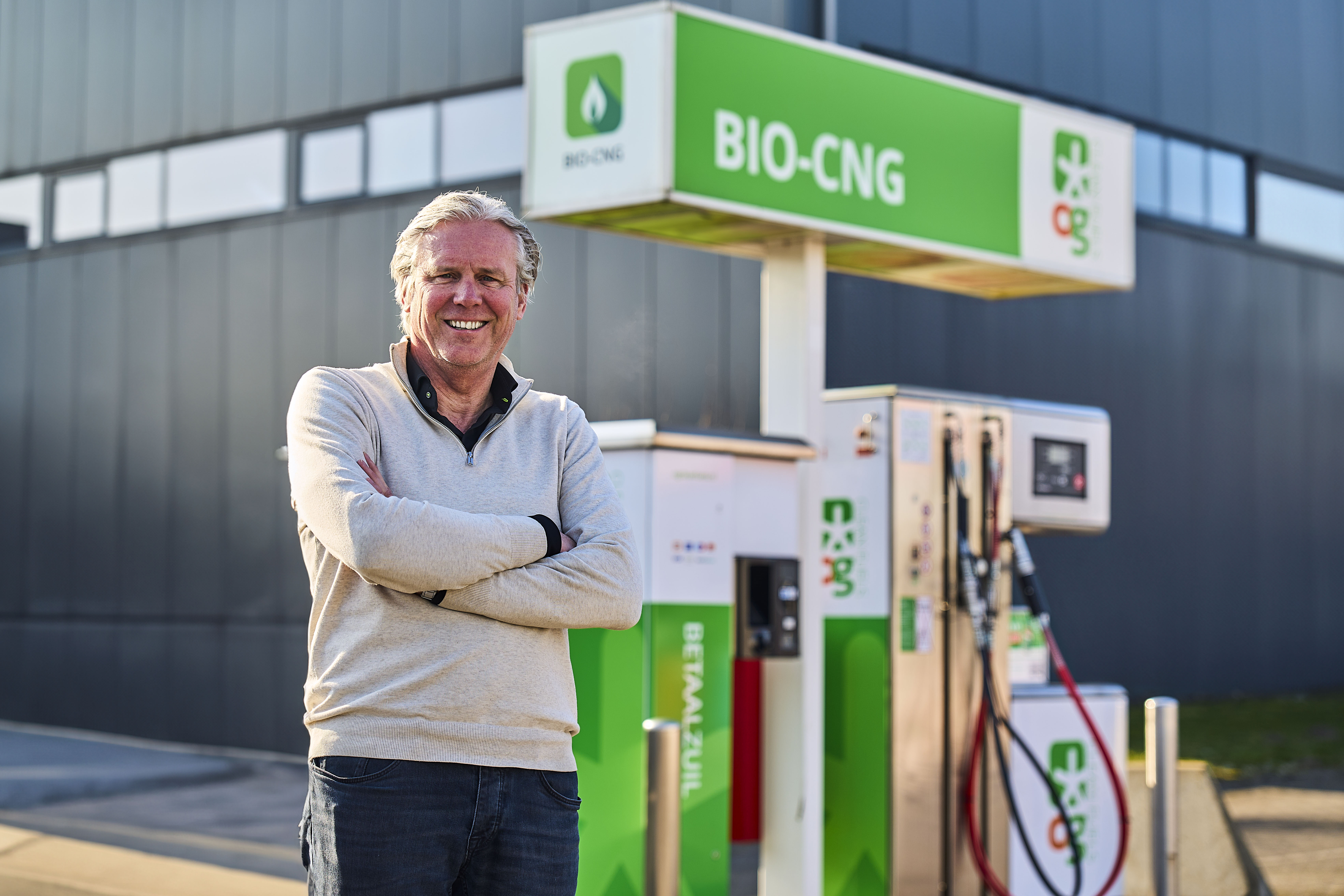The greening of road transport is facing unnecessary delays due to a one-sided focus on electric and hydrogen trucks. The refuelling infrastructure is ready for biofuels, truck manufacturers have the models, and the total cost of ownership is close to that of a diesel truck, says Wijtze Bakker, Director Netherlands at OG Clean Fuels, in an interview with Elsevier.
Electric driving is becoming increasingly feasible and affordable for passenger cars. But for heavy road transport, the path to green hydrogen and electrification is still full of obstacles. The expectation is that hydrogen trucks will only become commercially viable around 2035, says Bakker. “Apart from that, the production of green hydrogen is expensive.” The problem with electric trucks is that they require a completely different charging infrastructure than passenger vehicles. For both options, it is difficult to make the business case viable.
European refuelling infrastructure
“Together with logistics partners, we are convinced that all sustainable solutions are needed to meet the emission targets for 2030 and beyond. Biofuels such as Bio CNG, Bio LNG and HVO100 biodiesel are affordable and widely available alternatives that are already in good supply and reduce CO₂ emissions,” says Bakker. “For Bio CNG and Bio LNG, the refuelling infrastructure is in place throughout Europe. In the Netherlands alone, OG operates nearly 100 Bio CNG stations.”
Production can easily be scaled up. “From residual materials such as organic waste and manure, you can produce vast quantities of biogas. So you can already take a big step towards greening road transport.” The investment in a new truck is quite manageable, he believes. “The total cost of ownership is only slightly higher than that of diesel.”
“In return, a small additional investment yields a very large CO₂ reduction.” The market is embracing biofuels, he says. “Truck manufacturers such as Volvo, Scania and Iveco are committing to Bio CNG and Bio LNG. And major logistics players including Amazon and DHL are investing in large CNG fleets.”
Solution for the manure problem
The alternative for making transport more sustainable already exists, but is insufficiently recognised by policymakers in Brussels and The Hague, Bakker fears. “You can achieve a 90 percent CO₂ reduction with biogas and Bio CNG. That leaves just 10 percent.” He tells of a conversation he had a year ago in Brussels, with the Director-General for Climate and the Director-General for Energy.
The latter is focused on increasing biogas production in Europe, while the DG for Climate is aiming for a CO₂-free Europe by 2050. “There is a gap between the two. We will need to be much more flexible with the various options available to take action now. We can already achieve a great deal. Why would you wait for the expansion of the electricity grid and the production of green hydrogen, which is a massive challenge and will cost hundreds of billions of euros, when you can already realise a 90 percent CO₂ reduction in road transport?”
“We will continue to produce waste. Moreover, we have a major manure problem. From both we can produce biogas very effectively, which can be used as a biofuel, among other things.”
Biofuel offers a different cost picture
Goods transport contributes significantly to CO₂ emissions, which can be reduced relatively easily with biofuels. That is the message. Bakker draws a comparison with the electric and hybrid heat pump: “If you start with a hybrid heat pump, you immediately save 60 percent on your gas consumption. That is a major step forward. Moreover, a hybrid heat pump is accessible to a much broader group.”
“By being flexible in the way you reach your goals, you significantly increase your options. Making things more sustainable will always cost money, but the cost structure for biofuels is very different from that of an electric truck, and even more so compared to a hydrogen truck. Bio CNG, Bio LNG and HVO100 offer an affordable alternative for greening heavy road transport, reducing CO₂ emissions by up to 90 percent compared to diesel.”

